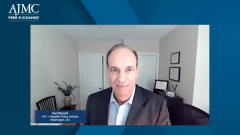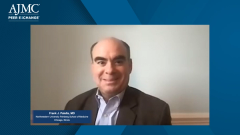
Overcoming Barriers to Access HIV PrEP
Carl Schmid shares steps that providers and payers can take to overcome access barriers for HIV PrEP therapy.
Episodes in this series

Ryan Haumschild, PharmD, MS, MBA: One more piece I want to hit on is sometimes, Sean, you talked about a lot of barriers. You talked about some specifically within policy and the education that we can be doing. You also briefly touched on provider and payer barriers, but I’m looking for more around these provider and payer barriers because as we educate, this is kind of our social responsibility of providing care to these patients. How can we work through them? Carl, I don’t know through your experience if you can highlight what are the steps that have been taken by providers and payers to overcome these barriers and what can we do moving forward?
Carl Schmid: I think Sean did a good job of outlaying the barriers. Providers, first of all, have to approach their patient as a whole and have conversations with them in a nonjudgmental fashion. This should not just be focused on PrEP [pre-exposure prophylaxis]. The CDC [Centers for Disease Control and Prevention] is focused on a status-neutral approach right now. So they should go in and talk about sex, or injection drug use, or other practices that could put someone at risk for HIV. Before you have PrEP or talk about PrEP, you must have an HIV test. That person could be also living with HIV. It has to be a very holistic approach. It has to be nonjudgmental. They cannot be afraid. They must talk about sex. They have to talk about all different forms of sex and different people. Right now, there’s still a lot of discrimination by providers, and we have to get over that.
The CDC just came out with new practice guidelines for clinicians on prescribing PrEP. There are good tool kits in there for providers to follow, and they also have them on discussing sex and HIV testing. I hope the CDC does more in getting those out to providers, talking to conventions, medical practice conventions and conferences, to getting them out. When it comes to payers, they have a responsibility as well. As you know, this is a preventive service, and as we’re going to talk about, it has to be covered right now. Those barriers should be gone when it comes to cost. We’re still seeing problems with payers charging people, cost-sharing for these services, for the ancillary services, not putting the drugs on the formulary in a correct way to show that they are preventive drugs. The problem with PrEP right now is those drugs are also used for treatment, and there’s some confusion. Sometimes you can see Truvada [emtricitabine/tenofovir] on a certain tier, and it’s for treatment. It needs to be delineated for prevention as well. But payers could go out and advertise to their clients, saying that this is a preventive service and it’s free, and you should take advantage of it. There’s a lot they can do as well.
Ryan Haumschild, PharmD, MS, MBA: Payers are great partners because I think of it myself, as an IDN [integrated delivery network] payer and provider, of the things that we can be doing. I know we have a lot of payers that tune in here to AJMC® Peer Exchange, so these are some of the key takeaways, how to be better partners, create better transparency around coverage, and ensure members access, which is that next step building upon this education and the awareness of prescribing. Thanks so much for going through that.
Transcript Edited for Clarity
Newsletter
Stay ahead of policy, cost, and value—subscribe to AJMC for expert insights at the intersection of clinical care and health economics.






























































